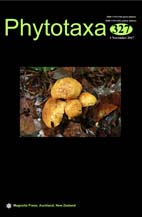Abstract
Guibourtia is a genus of Leguminosae comprising ca. 15 mostly African species, but it is also represented in the Neotropics, with populations in Cuba and South America. The Neotropical populations have been treated as comprising one to several species and/or infraspecific taxa. To access the distinctiveness of these putative taxa in the Neotropics, we analyzed morphological variation in herbarium specimens. Morphological discontinuities in leaflet shape, texture, and venation, and ovary pubescence support the recognition of two geographically disjunct species: G. hymenaeifolia in Cuba and G. chodatiana in South America. Another taxon, Guibourtia confertiflora is known from only a single specimen from northeastern Brazil. It possess characteristics of both Guibourtia and the related genus Peltogyne, and in most respects, it resembles the sympatric species Peltogyne pauciflora. We tentatively exclude it from our analysis pending further study. We provide an identification key, descriptions and illustrations of all treated taxa, taxonomic comments and formalization of synonyms and lectotypifications.

